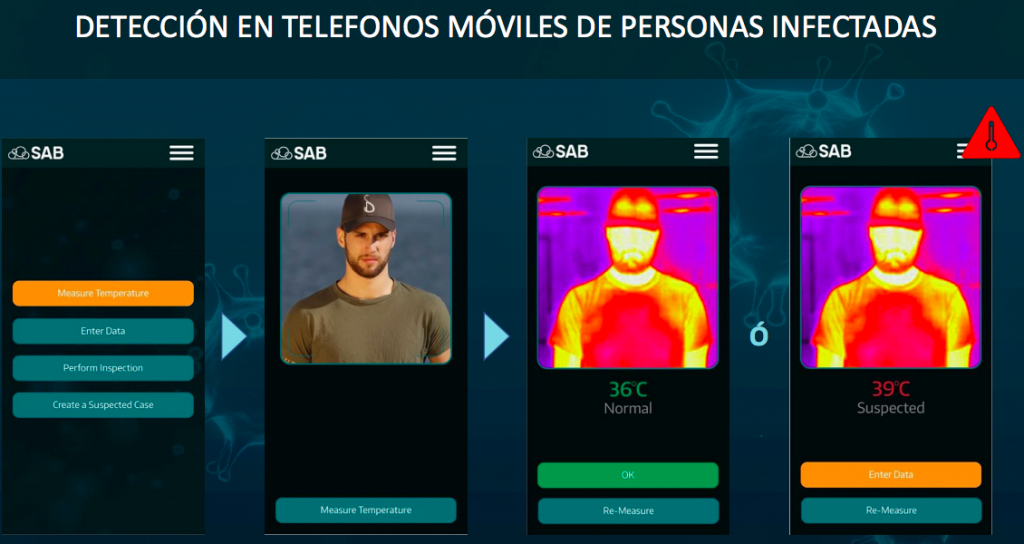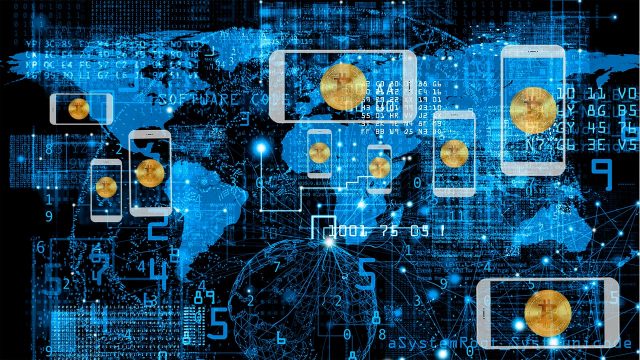An Artificial Intelligence platform can know in real-time if a person has the symptoms of the COVID-19 coronavirus
It is only a matter of days and closing agreements for the technology company G2K Group to introduce to Mexico a solution based on Artificial Intelligence that allows detection diagnostics to people infected with the COVID-19 coronavirus.
Through a platform (SAB) that lands on a downloadable application for smartphones and with the help of a thermal camera (which communicates information to the device), it is possible to know in real-time if a person gathers the symptoms that the health authorities have decreed as essential for diagnosis such as dry cough, fever, lack of smell, among others.

Omar El Gohary De Valle, the co-founder of Grupo G2K, talked to Forbes México about this technology, which already works in hospitals, clinics and some other public places in Germany and Egypt, which has had favorable results, especially in the area of immediacy.
“In Mexico, we are hardly pushing the solution, it also depends a lot on the availability of thermal cameras. We are talking about the next week, we just need to confirm the client to do it now (these days). This has to be super fast. Mexico is in the optimal position to take all the learning from other countries that have already lived it to avoid what is to come, “says the manager.
The company, which is governed under the concept of “Safe Cities” a week after the threat of COVID-19 is detected, implemented its intelligent platform occupied in critical areas such as airports, hospitals, supermarkets, or train stations, achieving temperature detection high corporal, the registry of infected people through artificial intelligence, as well as the analysis of virus spread, and digital monitoring of cases of possible infections until the time of their recovery; even developing an app and a control center that allows immediate decisions to stop the chains of contagion.
How does it work
What this company did was to integrate the signals from the thermal cameras and unite it with its platform and tools. They developed an app that in the event that fever is detected in someone, it is entered either by the algorithm of the thermal camera or manually and in turn people are asked what their symptoms are.
“Logically it must be consensual, that the person allows it and wants to do it. She puts her data on where she was, who she was in contact with, and so what we basically do is digitize the entire information chain from the moment a person is at risk of being infected, ”he details.
The manager points out that what they set out to do was to see how they digitized this chain and they did it with this platform through the integration of thermal cameras and the application. Then all this information comes to a single platform and there you can see everything to make decisions faster, take the test, alert the population.
With this data in fact, says El Gohary De Valle, you can decide which cities you should close, streets if necessary, etc. and that allows governments or large companies to have greater control and protection.
“We have already installed this in some hospitals and clinics, we are trying to put this platform in some airports and at the government level. What is happening in the market is that all this is being done but manually, so you have people at airports, for example, and they process the data. This happened in many countries, and if it was not noted that they had the symptoms, someone with the virus undoubtedly entered ”, he details.
He points out that the app for data capture can be downloaded to the cell phone and interact with a thermal camera, which becomes a mobile temperature collection station.
“The camera sends an alarm to your cell phone and then you go to the person and let them know that they detected a fever. They then ask him if he has a good sense of smell, if he touched, where he was and if it is affirmative, let him know that he is at high risk of having the virus, “he says.
This platform that basically lands its diagnosis on the symptoms of people, can also rule out some cases that are not necessarily positive for covid-19 based on their data by not registering the minimum total of symptoms that the health authorities have made known. .
“All this data goes to a private cloud or a server, and there is all the information and can also be followed up and progress of patients. What we are not doing and that for reasons of data privacy is, for example, the triangulation of cell phones, of signals. With Artificial Intelligence, what is done is to use pattern detection and prediction algorithms, so if you know where the infected people were, you can determine where the foci with the highest incidence of the virus are and therefore, the system can give a recommendation where it is growing or there is a greater concentration of people, such as risk areas ”, he details.

This digitization of the virus process was carried out by the company in just two weeks and was tested in a clinic, and from there, the director pointed out, they introduced it to clinics and hospitals.
“At the moment we are in clinics and hospitals in Germany, we have already implemented it in Egypt, and in Mexico, we have already demonstrated the solution, what happens is that we only took it out a week ago. Many of the governments what they tell us is that they need the system, not only for this crisis but for the rebound that will come in a few months. People are already preparing, but for the next wave that is expected to come in October, November. ”
Source: forbes.com.mx
The Mazatlan Post





